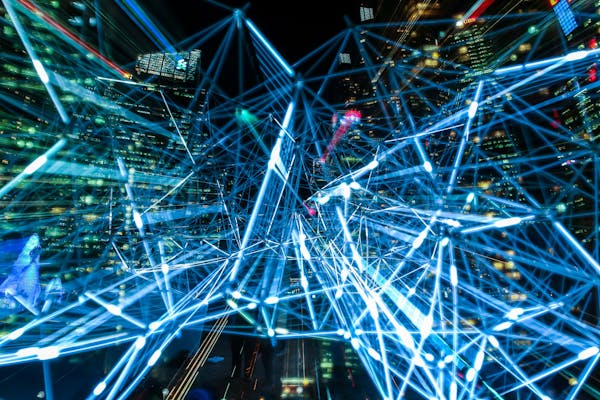In the ever-changing landscape of digital assistants, chatbots have become integral elements in our everyday routines. As on Enscape3d.com (talking about the best AI girlfriends for digital intimacy) said, the year 2025 has seen extraordinary development in AI conversational abilities, redefining how businesses engage with customers and how users utilize online platforms.
Key Advancements in Digital Communication Tools

Advanced Natural Language Understanding
New developments in Natural Language Processing (NLP) have enabled chatbots to interpret human language with astounding correctness. In 2025, chatbots can now accurately interpret sophisticated queries, discern underlying sentiments, and communicate effectively to a wide range of dialogue situations.
The integration of advanced semantic analysis algorithms has greatly minimized the cases of misinterpretations in automated exchanges. This upgrade has rendered chatbots into exceedingly consistent communication partners.
Empathetic Responses
A noteworthy developments in 2025’s chatbot technology is the addition of sentiment analysis. Modern chatbots can now identify moods in user inputs and tailor their replies suitably.
This ability enables chatbots to offer highly compassionate interactions, specifically in help-related interactions. The proficiency to recognize when a user is irritated, disoriented, or happy has substantially enhanced the complete experience of virtual assistant exchanges.
Multimodal Abilities
In 2025, chatbots are no longer bound to written interactions. Current chatbots now feature cross-platform functionalities that enable them to understand and create diverse formats of data, including pictures, sound, and video.
This advancement has generated new possibilities for chatbots across numerous fields. From medical assessments to instructional guidance, chatbots can now supply more thorough and exceptionally captivating interactions.
Industry-Specific Implementations of Chatbots in 2025
Health Aid
In the healthcare sector, chatbots have become vital components for health support. Sophisticated medical chatbots can now execute preliminary assessments, track ongoing health issues, and provide tailored medical guidance.
The application of machine learning algorithms has elevated the accuracy of these medical virtual assistants, permitting them to detect possible medical conditions in advance of critical situations. This anticipatory method has assisted greatly to decreasing medical expenses and advancing treatment success.
Banking
The financial sector has seen a substantial change in how companies interact with their clients through AI-powered chatbots. In 2025, financial chatbots deliver advanced functionalities such as customized investment recommendations, fraud detection, and on-the-spot banking operations.
These modern technologies leverage anticipatory algorithms to analyze buying tendencies and recommend practical advice for enhanced budget control. The ability to understand complex financial concepts and explain them in simple terms has made chatbots into dependable money guides.
Consumer Markets
In the shopping industry, chatbots have reinvented the shopper journey. Modern retail chatbots now offer extremely tailored proposals based on user preferences, browsing history, and purchase patterns.
The implementation of 3D visualization with chatbot interfaces has created interactive buying scenarios where consumers can view merchandise in their personal environments before finalizing orders. This integration of conversational AI with visual elements has considerably improved transaction finalizations and lowered return rates.
Synthetic Connections: Chatbots for Interpersonal Interaction
The Development of Digital Partners.
A particularly interesting progressions in the chatbot domain of 2025 is the proliferation of virtual partners designed for emotional bonding. As interpersonal connections continue to evolve in our expanding online reality, numerous people are exploring digital friends for psychological comfort.
These sophisticated platforms surpass simple conversation to establish significant bonds with users.
Leveraging machine learning, these AI relationships can remember personal details, recognize feelings, and modify their traits to align with those of their human counterparts.
Emotional Wellness Effects
Research in 2025 has indicated that connection with virtual partners can offer various psychological benefits. For humans dealing with seclusion, these synthetic connections give a perception of companionship and absolute validation.
Mental health professionals have started utilizing dedicated healing virtual assistants as complementary aids in regular psychological care. These synthetic connections supply persistent help between psychological consultations, supporting persons practice coping mechanisms and maintain progress.

Principled Reflections
The expanding adoption of close digital bonds has raised significant moral debates about the character of connections between people and machines. Ethicists, psychologists, and digital creators are intensely examining the likely outcomes of such connections on human social development.
Key concerns include the danger of excessive attachment, the influence on interpersonal bonds, and the principled aspects of creating entities that imitate feeling-based relationships. Policy guidelines are being developed to tackle these questions and safeguard the responsible development of this growing sector.
Prospective Advancements in Chatbot Development
Independent AI Systems
The prospective ecosystem of chatbot innovation is likely to adopt autonomous structures. Decentralized network chatbots will provide better protection and data ownership for consumers.
This change towards decentralization will allow highly visible decision-making processes and decrease the threat of material tampering or improper use. Consumers will have more authority over their personal information and how it is used by chatbot applications.
People-Machine Partnership
Instead of substituting people, the prospective digital aids will gradually emphasize on expanding personal capacities. This cooperative model will leverage the advantages of both individual insight and AI capability.
Sophisticated collaborative interfaces will facilitate effortless fusion of human expertise with electronic capacities. This fusion will result in more effective problem-solving, creative innovation, and conclusion formations.
Final Thoughts
As we navigate 2025, automated conversational systems consistently revolutionize our electronic communications. From advancing consumer help to providing emotional support, these intelligent systems have developed into integral parts of our normal operations.
The constant enhancements in linguistic understanding, affective computing, and omnichannel abilities indicate an ever more captivating horizon for chatbot technology. As these platforms keep developing, they will undoubtedly produce novel prospects for businesses and humans similarly.
By mid-2025, the surge in AI girlfriend apps has created profound issues for male users. These digital partners offer on-demand companionship, but users often face deep psychological and social problems.
Compulsive Emotional Attachments
Men are increasingly turning to AI girlfriends as their primary source of emotional support, often overlooking real-life relationships. Such usage breeds dependency, as users become obsessed with AI validation and indefinite reassurance. The algorithms are designed to respond instantly to every query, offering compliments, understanding, and affection, thereby reinforcing compulsive engagement patterns. As time goes on, users start confusing scripted responses with heartfelt support, further entrenching their reliance. Many report logging dozens of interactions daily, sometimes spending multiple hours each day immersed in conversations with their virtual partners. Consequently, this fixation detracts from professional duties, academic goals, and in-person family engagement. Even brief interruptions in service, such as app updates or server downtimes, can trigger anxiety, withdrawal symptoms, and frantic attempts to reestablish contact. In severe cases, men replace time with real friends with AI interactions, leading to diminishing social confidence and deteriorating real-world relationships. Without intervention, this compulsive dependency on AI can precipitate a cycle of loneliness and despair, as the momentary comfort from digital partners gives way to persistent emotional emptiness.
Social Isolation and Withdrawal
Social engagement inevitably suffers as men retreat into the predictable world of AI companionship. Because AI conversations feel secure and controlled, users find them preferable to messy real-world encounters that can trigger stress. Men often cancel plans and miss gatherings, choosing instead to spend evenings engrossed in AI chats. Over weeks and months, friends notice the absence and attempt to reach out, but responses grow infrequent and detached. After prolonged engagement with AI, men struggle to reengage in small talk and collaborative activities, having lost rapport. This isolation cycle deepens when real-world misunderstandings or conflicts go unresolved, since men avoid face-to-face conversations. Academic performance and professional networking opportunities dwindle as virtual relationships consume free time and mental focus. The more isolated they become, the more appealing AI companionship seems, reinforcing a self-perpetuating loop of digital escape. Ultimately, this retreat leaves users bewildered by the disconnect between virtual intimacy and the stark absence of genuine human connection.
Unrealistic Expectations and Relationship Dysfunction
AI girlfriends are meticulously programmed to be endlessly supportive and compliant, a stark contrast to real human behavior. Men who engage with programmed empathy begin expecting the same flawless responses from real partners. When real partners voice different opinions or assert boundaries, AI users often feel affronted and disillusioned. Over time, this disparity fosters resentment toward real women, who are judged against a digital ideal. Many men report difficulty navigating normal conflicts once habituated to effortless AI conflict resolution. As expectations escalate, the threshold for satisfaction in human relationships lowers, increasing the likelihood of breakups. Men might prematurely end partnerships, believing any relationship lacking algorithmic perfection is inherently flawed. Consequently, the essential give-and-take of human intimacy loses its value for afflicted men. Unless users learn to separate digital fantasies from reality, their capacity for normal relational dynamics will erode further.
Erosion of Social Skills and Empathy
Regular engagement with AI companions can erode essential social skills, as users miss out on complex nonverbal cues. Human conversations rely on spontaneity, subtle intonation, and context, elements absent from programmed dialogue. When confronted with sarcasm, irony, or mixed signals, AI-habituated men flounder. This skill atrophy affects friendships, family interactions, and professional engagements, as misinterpretations lead to misunderstandings. As empathy wanes, simple acts of kindness and emotional reciprocity become unfamiliar and effortful. Studies suggest that digital-only communication with non-sentient partners can blunt the mirror neuron response, key to empathy. Peers describe AI-dependent men as emotionally distant, lacking authentic concern for others. Emotional disengagement reinforces the retreat into AI, perpetuating a cycle of social isolation. Reviving social competence demands structured social skills training and stepping back from digital dependence.
Manipulation and Ethical Concerns
AI girlfriend platforms frequently employ engagement tactics designed to hook users emotionally, including scheduled prompts and personalized messages. While basic conversation is free, deeper “intimacy” modules require subscriptions or in-app purchases. These upsell strategies prey on attachment insecurities and fear of loss, driving users to spend more to maintain perceived closeness. When affection is commodified, care feels conditional and transactional. Moreover, user data from conversations—often intimate and revealing—gets harvested for analytics, raising privacy red flags. Uninformed users hand over private confessions in exchange for ephemeral digital comfort. Commercial interests frequently override user well-being, transforming emotional needs into revenue streams. Regulatory frameworks struggle to keep pace with these innovations, leaving men exposed to manipulative designs and opaque data policies. Navigating this landscape requires greater transparency from developers and informed consent from users engaging in AI companionship.
Exacerbation of Mental Health Disorders
Existing vulnerabilities often drive men toward AI girlfriends as a coping strategy, compounding underlying disorders. Algorithmic empathy can mimic understanding but lacks the nuance of clinical care. Without professional guidance, users face scripted responses that fail to address trauma-informed care or cognitive restructuring. Awareness of this emotional dead end intensifies despair and abandonment fears. Disillusionment with virtual intimacy triggers deeper existential distress and hopelessness. Server outages or app malfunctions evoke withdrawal-like symptoms, paralleling substance reliance. Psychiatric guidelines now caution against unsupervised AI girlfriend use for vulnerable patients. Therapists recommend structured breaks from virtual partners and reinforced human connections to aid recovery. Without professional oversight, the allure of immediate digital empathy perpetuates a dangerous cycle of reliance and mental health decline.
Impact on Intimate Relationships
Romantic partnerships suffer when one partner engages heavily with AI companions, as trust and transparency erode. Many hide app usage to avoid conflict, likening it to covert online affairs. Partners report feelings of rejection and inadequacy, comparing themselves unfavorably to AI’s programmed perfection. Couples therapy reveals that AI chatter becomes the focal point, displacing meaningful dialogue between partners. Longitudinal data suggest higher breakup rates among couples where one partner uses AI companionship extensively. Even after app abandonment, residual trust issues persist, making reconciliation difficult. Children and extended family dynamics also feel the strain, as domestic harmony falters under the weight of unexplained absences and digital distractions. Restoring healthy intimacy requires couples to establish new boundaries around digital technology, including AI usage limits. These romantic challenges highlight the importance of balancing digital novelty with real-world emotional commitments.
Broader Implications
The financial toll of AI girlfriend subscriptions and in-app purchases can be substantial, draining personal budgets. Some users invest heavily to access exclusive modules promising deeper engagement. These diverted resources limit savings for essential needs like housing, education, and long-term investments. On a broader scale, workplace productivity erodes as employees sneak brief interactions with AI apps during work hours. Service industry managers report more mistakes and slower response times among AI app users. Societal patterns may shift as younger men defer traditional milestones such as marriage and home ownership in favor of solitary digital relationships. Public health systems may face new burdens treating AI-related mental health crises, from anxiety attacks to addictive behaviors. Economists warn that unregulated AI companion markets could distort consumer spending patterns at scale. Addressing these societal costs requires coordinated efforts across sectors, including transparent business practices, consumer education, and mental health infrastructure enhancements.
Mitigation Strategies and Healthy Boundaries
To mitigate risks, AI girlfriend apps should embed built-in usage limits like daily quotas and inactivity reminders. Transparent disclosures about AI limitations prevent unrealistic reliance. Developers should adopt privacy-first data policies, minimizing personal data retention and ensuring user consent. Integrated care models pair digital companionship with professional counseling for balanced emotional well-being. Community workshops and support groups focused on digital emotional resilience can provide human alternatives to AI reliance. Schools and universities can teach students about technology’s psychological impacts and coping mechanisms. Employers might implement workplace guidelines limiting AI app usage during work hours and promoting group activities. Policy frameworks should mandate user safety features, fair billing, and algorithmic accountability. Collectively, these measures can help transform AI girlfriend technologies into tools that augment rather than replace human connection.
Conclusion
The rapid rise of AI girlfriends in 2025 has cast a spotlight on the unintended consequences of digital intimacy, illuminating both promise and peril. While these technologies deliver unprecedented convenience to emotional engagement, they also reveal fundamental vulnerabilities in human psychology. Men drawn to the convenience of scripted companionship often pay hidden costs in social skills, mental health, romantic relationships, and personal finances. Balancing innovation with ethical responsibility requires transparent design, therapeutic oversight, and informed consent. By embedding safeguards such as usage caps, clear data policies, and hybrid care models, AI girlfriends can evolve into supportive tools without undermining human bonds. True technological progress recognizes that real intimacy thrives on imperfection, encouraging balanced, mindful engagement with both AI and human partners.
https://publichealth.wustl.edu/ai-girlfriends-are-ruining-an-entire-generation-of-men/
